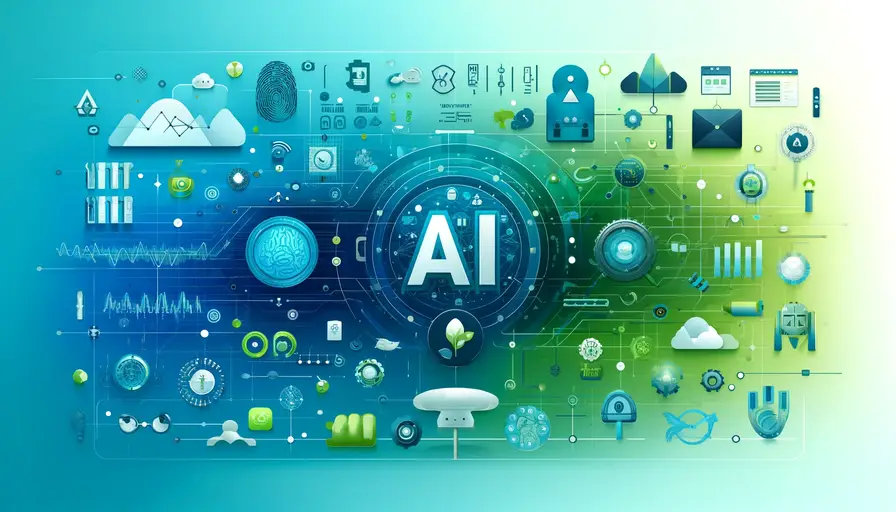
The Future of Data Science: Can AI Replace Data Scientists?

- AI Can Automate Certain Data Science Tasks, Reducing the Need for Manual Work
- AI Can Analyze Large Amounts of Data Much Faster Than Humans, Increasing Efficiency
- AI Can Uncover Patterns and Insights in Data That May Be Missed by Human Data Scientists
- AI Can Assist Data Scientists in Making More Accurate Predictions and Decisions
- AI Can Handle Mundane and Repetitive Tasks, Freeing Up Data Scientists to Focus on More Complex and Strategic Work
- AI Can Enhance the Capabilities of Data Scientists by Providing Them with Advanced Tools and Algorithms
- AI Can Help Bridge the Gap Between Data Collection and Data Analysis
- AI Can Continuously Learn and Improve, Adapting to New Challenges and Advancements in the Field of Data Science
- AI Can Enable Data Scientists to Scale Their Work and Handle Larger Datasets with Ease
- AI Can Provide Data Scientists with New Perspectives and Ideas, Enhancing Creativity and Innovation in the Field
AI Can Automate Certain Data Science Tasks, Reducing the Need for Manual Work
AI automation is transforming the field of data science by handling routine tasks that traditionally required significant manual effort. Tasks such as data cleaning, data preprocessing, and feature engineering can now be automated using AI-driven tools. This automation not only speeds up the workflow but also reduces the likelihood of human error, leading to more reliable results.
For instance, automated data cleaning tools can identify and correct inconsistencies in data sets, ensuring that the data is ready for analysis. Similarly, AI can automate feature selection by evaluating the importance of different features and selecting the most relevant ones for the model. This reduces the workload on data scientists and allows them to focus on more complex analytical tasks.
An example of automated data cleaning using Python:
import pandas as pd
from sklearn.impute import SimpleImputer
# Load data
data = pd.read_csv('data.csv')
# Initialize the imputer
imputer = SimpleImputer(strategy='mean')
# Impute missing values
data_cleaned = pd.DataFrame(imputer.fit_transform(data), columns=data.columns)This code snippet demonstrates how to use SimpleImputer from scikit-learn to automate the process of filling missing values in a dataset.
The Future of Machine Learning: Rising Demand and OpportunitiesAutomation in data science extends beyond preprocessing. AI can also automate model selection and hyperparameter tuning. Tools like AutoML (Automated Machine Learning) can evaluate multiple models and configurations to find the best-performing one for a given task. This capability significantly reduces the time and expertise required to develop high-quality models, making advanced analytics more accessible to organizations.
AI Can Analyze Large Amounts of Data Much Faster Than Humans, Increasing Efficiency
AI's ability to process large volumes of data quickly and accurately is one of its most significant advantages. Traditional data analysis methods can be time-consuming and labor-intensive, especially when dealing with massive datasets. AI, on the other hand, can handle vast amounts of data at high speeds, providing insights much faster than human analysts can.
For example, AI algorithms can analyze customer behavior data from millions of transactions in a matter of minutes, identifying trends and patterns that would take human analysts weeks or even months to uncover. This rapid analysis enables businesses to make data-driven decisions in real-time, gaining a competitive edge.
An example of using AI for large-scale data analysis in Python:
Quantum Computing's Impact on Black Box Machine Learning Algorithmsimport pandas as pd
from sklearn.ensemble import RandomForestClassifier
# Load data
data = pd.read_csv('large_dataset.csv')
X = data.drop('target', axis=1)
y = data['target']
# Initialize and train the model
model = RandomForestClassifier(n_estimators=100)
model.fit(X, y)
# Make predictions
predictions = model.predict(X)This code demonstrates how to use a RandomForestClassifier to analyze a large dataset and make predictions efficiently.
Moreover, AI's speed in data analysis is not just limited to structured data. AI techniques like natural language processing (NLP) can analyze unstructured data such as text, audio, and video at unprecedented speeds. This capability is crucial for applications like sentiment analysis, where businesses need to process and interpret large volumes of customer feedback quickly.
The ability of AI to analyze large datasets rapidly also enhances predictive analytics. By processing more data in less time, AI models can generate more accurate and timely predictions. This efficiency is particularly valuable in fields such as finance, healthcare, and logistics, where timely insights can drive critical decisions and improve outcomes.
AI Can Uncover Patterns and Insights in Data That May Be Missed by Human Data Scientists
AI's advanced analytical capabilities enable it to uncover hidden patterns and insights in data that human data scientists might overlook. Machine learning algorithms can detect complex relationships and interactions within data that are not immediately apparent to humans. This ability to discover subtle patterns is particularly valuable in areas such as fraud detection, where identifying unusual behavior patterns is crucial.
Unveiling the Transition from Machine Learning to AIFor example, AI can analyze transaction data to identify fraudulent activities by detecting anomalies and deviations from normal behavior. These insights can then be used to develop more effective fraud prevention strategies. Similarly, AI can analyze medical data to identify early signs of diseases, enabling early intervention and better patient outcomes.
An example of anomaly detection using Python:
from sklearn.ensemble import IsolationForest
# Load data
data = pd.read_csv('transaction_data.csv')
# Initialize and train the model
model = IsolationForest(contamination=0.01)
model.fit(data)
# Detect anomalies
anomalies = model.predict(data)This code snippet demonstrates how to use an IsolationForest to detect anomalies in a dataset, which can be useful for identifying fraudulent transactions.
In addition to detecting anomalies, AI can also identify trends and correlations that may be missed by traditional analysis methods. For instance, AI can analyze social media data to uncover emerging trends and sentiments, providing businesses with valuable insights into customer preferences and market dynamics.
Machine Learning or Robotics for the FutureFurthermore, AI's ability to process and analyze data from multiple sources allows it to generate comprehensive insights that consider various factors and dimensions. This holistic approach to data analysis can lead to more accurate and actionable insights, driving better decision-making and strategy development.
AI Can Assist Data Scientists in Making More Accurate Predictions and Decisions
AI's predictive capabilities are enhancing the accuracy of predictions and decisions made by data scientists. Machine learning models can learn from historical data to make predictions about future events, trends, and behaviors. These predictions can be used to inform decision-making processes, improving outcomes across various domains.
For example, in the financial sector, AI can be used to predict stock prices, enabling investors to make informed investment decisions. By analyzing historical price data, market trends, and other relevant factors, AI models can generate accurate predictions that guide investment strategies.
An example of using AI for stock price prediction in Python:
Machine Learning Towards Fully Automated Systemsimport pandas as pd
from sklearn.model_selection import train_test_split
from sklearn.linear_model import LinearRegression
# Load data
data = pd.read_csv('stock_prices.csv')
X = data.drop('price', axis=1)
y = data['price']
# Split data into training and testing sets
X_train, X_test, y_train, y_test = train_test_split(X, y, test_size=0.2)
# Initialize and train the model
model = LinearRegression()
model.fit(X_train, y_train)
# Make predictions
predictions = model.predict(X_test)This code demonstrates how to use a LinearRegression model to predict stock prices based on historical data.
AI can also assist data scientists in making more accurate decisions by providing them with advanced tools and algorithms. For instance, AI-powered decision support systems can analyze vast amounts of data and generate recommendations based on the insights derived. These systems can help data scientists identify the best course of action in complex scenarios.
Moreover, AI can enhance the accuracy of predictive models by incorporating various types of data and using advanced techniques like ensemble learning. Ensemble methods combine multiple models to improve overall prediction accuracy, making them more robust and reliable.
AI Can Handle Mundane and Repetitive Tasks, Freeing Up Data Scientists to Focus on More Complex and Strategic Work
AI's ability to automate mundane and repetitive tasks is a significant advantage for data scientists. Tasks such as data entry, data cleaning, and preliminary analysis can be time-consuming and monotonous. By automating these tasks, AI allows data scientists to focus on more complex and strategic aspects of their work, such as model development, hypothesis testing, and insight generation.
Will Machine Learning Surpass Human Intelligence in the Future?For example, data cleaning often involves identifying and correcting errors, filling in missing values, and standardizing data formats. AI tools can automate these processes, reducing the time and effort required to prepare data for analysis. This automation ensures that data scientists have more time to spend on tasks that require creativity and critical thinking.
An example of automating data cleaning in Python:
import pandas as pd
from sklearn.preprocessing import StandardScaler
# Load data
data = pd.read_csv('data.csv')
# Fill missing values
data.fillna(method='ffill', inplace=True)
# Standardize data
scaler = StandardScaler()
data_scaled = pd.DataFrame(scaler.fit_transform(data), columns=data.columns)This code demonstrates how to automate the data cleaning process, including filling missing values and standardizing the data.
In addition to data cleaning, AI can automate the generation of initial insights and visualizations. Tools like automated exploratory data analysis (EDA) can quickly generate summaries, plots, and correlations, providing data scientists with a solid foundation for further analysis. This automation accelerates the initial stages of the data science workflow, enabling data scientists to dive deeper into more complex analyses.
Furthermore, by handling repetitive tasks, AI reduces the risk of human error and ensures consistency in the data processing workflow. This reliability is crucial for maintaining the quality and integrity of the data, leading to more accurate and trustworthy results.
AI Can Enhance the Capabilities of Data Scientists by Providing Them with Advanced Tools and Algorithms
The Importance of Human Expertise
The importance of human expertise in data science cannot be overstated. While AI provides powerful tools and algorithms, human data scientists bring critical thinking, domain knowledge, and creativity to the table. These human qualities are essential for interpreting results, generating hypotheses, and making strategic decisions based on data insights.
For example, AI algorithms can identify correlations and patterns in data, but it takes a human data scientist to understand the context and significance of these findings. Data scientists can leverage their expertise to develop more nuanced models, interpret complex results, and provide actionable recommendations.
Moreover, data scientists play a crucial role in defining the goals and objectives of data science projects. They determine the questions to be answered, the metrics to be measured, and the criteria for success. This strategic oversight ensures that AI tools and models are aligned with the business needs and objectives.
Human expertise is also vital for addressing ethical considerations in data science. Data scientists must ensure that AI models are fair, transparent, and accountable. They must identify and
mitigate biases, ensure data privacy, and adhere to ethical guidelines. This responsibility requires a deep understanding of both the technical and societal implications of AI.
AI Can Help Bridge the Gap Between Data Collection and Data Analysis
Improving the Overall Data Science Process
AI's ability to streamline the data pipeline is transforming the data science process. By automating data collection, preprocessing, and analysis, AI bridges the gap between these stages, creating a more efficient and integrated workflow. This improvement enhances the overall data science process, enabling faster and more accurate insights.
For example, AI-driven data integration tools can automatically collect data from various sources, clean and preprocess it, and prepare it for analysis. This automation reduces the time and effort required to gather and prepare data, allowing data scientists to focus on more advanced analytical tasks.
An example of automating data collection and preprocessing in Python:
import pandas as pd
import requests
# Collect data from an API
response = requests.get('https://api.example.com/data')
data = pd.DataFrame(response.json())
# Preprocess data
data.dropna(inplace=True)
data['date'] = pd.to_datetime(data['date'])This code demonstrates how to automate the process of collecting data from an API and preprocessing it for analysis.
AI also improves the integration of data from different sources, creating a unified dataset that can be analyzed more effectively. This capability is particularly valuable in fields like healthcare and finance, where data comes from multiple systems and formats. By creating a seamless data pipeline, AI ensures that data scientists have access to high-quality, integrated data for their analyses.
Furthermore, AI can enhance the data analysis process by providing advanced analytical tools and techniques. Machine learning algorithms, natural language processing, and deep learning models enable more sophisticated analyses, uncovering deeper insights and generating more accurate predictions. This integration of AI into the data science workflow significantly improves the efficiency and effectiveness of data analysis.
AI Can Continuously Learn and Improve, Adapting to New Challenges and Advancements in the Field of Data Science
AI's ability to continuously learn and improve is one of its most powerful features. Machine learning models can be retrained on new data, allowing them to adapt to changing conditions and evolving challenges. This continuous learning capability ensures that AI models remain relevant and effective over time.
For example, in the field of predictive maintenance, AI models can be retrained on new sensor data to improve their accuracy in predicting equipment failures. By continuously learning from new data, these models can adapt to changes in operating conditions and provide more reliable predictions.
An example of retraining a machine learning model in Python:
from sklearn.model_selection import train_test_split
from sklearn.ensemble import GradientBoostingClassifier
# Load new data
new_data = pd.read_csv('new_data.csv')
X = new_data.drop('target', axis=1)
y = new_data['target']
# Split data into training and testing sets
X_train, X_test, y_train, y_test = train_test_split(X, y, test_size=0.2)
# Retrain the model
model = GradientBoostingClassifier()
model.fit(X_train, y_train)
# Evaluate the model
score = model.score(X_test, y_test)
print(f'Model accuracy: {score}')This code demonstrates how to retrain a machine learning model on new data to improve its performance.
AI's ability to continuously learn also extends to adapting to advancements in the field of data science. As new algorithms, techniques, and best practices emerge, AI models can be updated and improved to incorporate these advancements. This adaptability ensures that AI remains at the forefront of data science innovation.
Moreover, continuous learning enables AI to handle new and unforeseen challenges. By leveraging techniques like transfer learning and reinforcement learning, AI models can generalize knowledge from one domain to another, improving their performance in novel situations. This flexibility makes AI a valuable tool for tackling a wide range of data science problems.
AI Can Enable Data Scientists to Scale Their Work and Handle Larger Datasets with Ease
AI's scalability is transforming the way data scientists handle large datasets. Traditional data analysis methods can struggle with the volume, velocity, and variety of big data. AI, on the other hand, is designed to scale, enabling data scientists to process and analyze large datasets efficiently.
For example, AI-powered data processing frameworks like Apache Spark can distribute data processing tasks across multiple nodes, significantly speeding up the analysis of large datasets. This scalability allows data scientists to work with big data more effectively, generating insights that were previously unattainable.
An example of using Apache Spark for scalable data processing in Python:
from pyspark.sql import SparkSession
# Initialize Spark session
spark = SparkSession.builder.appName('BigDataProcessing').getOrCreate()
# Load data
data = spark.read.csv('large_dataset.csv', header=True, inferSchema=True)
# Process data
data_cleaned = data.dropna().filter(data['value'] > 0)
# Show results
data_cleaned.show()This code demonstrates how to use Apache Spark to process a large dataset, leveraging the scalability of distributed computing.
AI's scalability also extends to model training and deployment. With the advent of cloud computing, data scientists can access virtually unlimited computing resources to train complex models on large datasets. Platforms like AWS, Google Cloud, and Azure offer scalable infrastructure that can handle the computational demands of modern machine learning.
Moreover, AI enables data scientists to deploy models at scale, serving predictions to millions of users or processing data from thousands of sensors in real-time. This capability is crucial for applications like real-time recommendation systems, fraud detection, and predictive maintenance, where timely and accurate predictions are essential.
AI Can Provide Data Scientists with New Perspectives and Ideas, Enhancing Creativity and Innovation in the Field
AI's analytical capabilities can inspire data scientists with new perspectives and ideas. By uncovering hidden patterns, correlations, and trends, AI can reveal insights that challenge conventional thinking and spark creative solutions. This ability to generate fresh ideas enhances innovation in the field of data science.
For example, AI can analyze social media data to identify emerging trends and sentiments that may not be immediately apparent to human analysts. These insights can inform marketing strategies, product development, and customer engagement efforts, driving innovation and competitiveness.
An example of using AI for trend analysis in Python:
import pandas as pd
from sklearn.feature_extraction.text import CountVectorizer
from sklearn.decomposition import LatentDirichletAllocation
# Load data
data = pd.read_csv('social_media_posts.csv')
text_data = data['post_content']
# Vectorize text data
vectorizer = CountVectorizer(stop_words='english')
text_vectorized = vectorizer.fit_transform(text_data)
# Perform topic modeling
lda = LatentDirichletAllocation(n_components=5)
topics = lda.fit_transform(text_vectorized)
# Show topics
print('Topics identified:')
for idx, topic in enumerate(lda.components_):
print(f'Topic {idx}:', [vectorizer.get_feature_names_out()[i] for i in topic.argsort()[-10:]])This code demonstrates how to use Latent Dirichlet Allocation (LDA) to identify topics in social media posts, revealing trends and insights.
AI can also enhance creativity by automating routine tasks, allowing data scientists to focus on more innovative aspects of their work. By handling data cleaning, preprocessing, and initial analysis, AI frees up time for data scientists to explore new ideas, develop novel models, and experiment with different approaches.
AI can provide data scientists with advanced tools and techniques that expand their analytical capabilities. Machine learning algorithms, natural language processing, and deep learning models offer new ways to analyze data and generate insights. These advanced tools enable data scientists to tackle complex problems and develop innovative solutions that drive progress in the field.
If you want to read more articles similar to The Future of Data Science: Can AI Replace Data Scientists?, you can visit the Trends category.



You Must Read